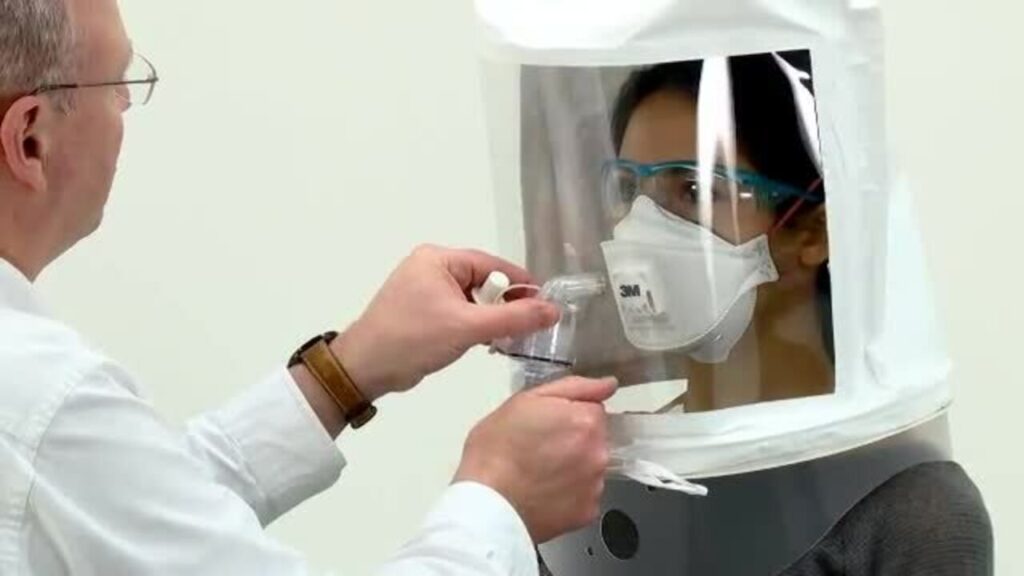Mask Fit Testing has tended to be regarded as just another compliance issue to be considered within the display of inadequate health and safety PPE within dusty or dangerous workplaces. Nevertheless, within a post COVID tightening of regulations and the growing importance of ESG factors, compliance with Mask Fit Testing is becoming a more cross-disciplinary concern. Even ISO 14001 consultants focused on environmental management systems have to take notice.
Tackling health and environmental issues in silos is no longer an option. With the growing expectation of organisations not only demonstrating environmental performance but also showcasing the resilience of their workforce, ethical supply chains, and overall ESG performance, Mask Fit Testing has emerged as a control measure within air quality management and ESG value chains.
Let’s take a closer look at this.
Respiratory hazards pose an environmental and occupational risk.
There are a number of organisations across Australia that handle or generate airborne hazardous materials that include respirable crystalline silicate, asbestos, welding fumes, volatile organic compounds (VOCs) and other materials that are detrimental to the health of the workforce, as well as the wider environment.
Safety officers evaluate the effectiveness of individual protection measures in place through the conduct of Mask Fit Testing, while the ISO 14001 consultants are interested in reviewing air monitoring systems, chemical handling, and emissions control and environmental legitimate expectation standards. Unfortunately, this is a missed opportunity as the two have very low overlapping engagement, and the two disciplines have virtually no intersection.
An ineffective fit test result does pose a health risk–but more importantly, it indicates a failure in engineering or environmental controls, leading to an overreliance on PPE. Possible reasons as to why a worker’s respirator may not properly fit include:
– Inadequate extraction ventilation
– Inadequate enclosures
– Containment system leaks
– Inconsistent dust suppression.
These are clearly environmental controls and are applicable to ISO 14001 audits and planning. Failure of Mask Fit Tests goes beyond being a WHS metric, it highlights underperformance of the environmental system.
Beyond Compliance: Fit Testing as a Performance Metric
As outlined in AS/NZS 1715, Safe Work Australia and state WHS regulators require Mask Fit Testing, whether quantitative or qualitative, as part of the adherence to the standard. However, compliance should be the floor, not the ceiling.
Including Mask Fit Testing data as an environmental performance metric in ISO 14001 frameworks allows consultants to:
– Showcase the effectiveness of controls around airborne contaminants
– Incorporate fit test pass rates in environmental goals and objectives
– Use fit test failures as triggers for environmental risk reviews.
This provides an opportunity to shift more of the discussion to proactive systems improvement, rather than just reactive safety checks.
Using Fit Testing Data as Evidence of Future Environmental Strategies
Most consultants who work with ISO 14001 focus on helping clients set up monitoring and measurement systems. However, none seem to focus on personal exposure data within this system. However, Mask Fit Test records provide:
Trends relating to the effectiveness of contaminant control, Task based risk insights such as blasting, cutting, spraying, and spraying; and Control verification on the hierarchy of the risk.
For clients operating in the sectors of manufacturing, mining, infrastructure, and demolition, using Fit Testing data within the scope of Environmental performance reviews will improve audit readiness and compliance with ISO 14001. It shows a business that not only understands the implications of their work, but also actively assesses the effectiveness of their control at the most essential worker level.
Integrating Fit Testing Data with Life Cycle Thinking
ISO 14001 promoted life cycle thinking, which involves looking at activities and impacts as a continuum. Mask Fit Testing also falls under this scope.
Consider the value of sourcing a high-performance, respirators from overseas as a cost-effective solution. However, if the fast fit testing shows that 40% of the workforce’s facial geometry will cause the mask to fail fit testing, the cost will include:
Increased waste generated from unusable stocks, an unnecessary carbon footprint fueled by respirator reorders, increased operational delays, and higher risk of exposure within the workplace.
A consultant looking at this within a life cycle perspective will outline how the choice of respirator negatively impacts health and the environment life at work.
Future-Facing: ESG and Human-Centred Risk Management
Australian regulators and investors are starting to look at the health of your workers, in addition to emissions and water use, as a sign of ESG maturity. Mask Fit Testing matches:
Worker wellbeing (an “S” in ESG)
Compliance traceability (a “G” in ESG)
Risk of airborne disease (closely linked to “E”)
Senior ISO 14001 consultants lacking these linkages may risk obsolescence in a human-centred world that demands integrated and verifiable risk strategies.
Final Thoughts
It’s time ISO 14001 consultants look at Mask Fit Testing data the same way they look at carbon, chemical, and energy metrics. Because at the intersection of air quality, compliance, and workforce safety lies the opportunity to ethically and operationally future-proof organisations, as well as protect the environment.
Mask Fit Testing is safety, but is also a test of environmental controls and a measure of the sustainability promise.



